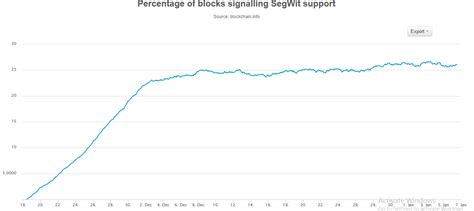Ethereum Segregated Witness (SegWit) and its Potential Impact on Scalability

When it comes to scaling Ethereum, one of the most prominent concerns has been the 1MB block size cap imposed by the Bitcoin protocol’s SegWit update. But how does it impact scalability? In this article, we’ll delve into the implications of SegWit and whether increasing its capacity could lead to a similar issue in the future.
What is SegWit?
Segregated Witness (SegWit) is a lightweight alternative to Bitcoin’s block size increase (BSI). It was designed to improve the speed of Bitcoin’s block creation without the need for a hard fork. By reducing the block size limit, SegWit seeks to increase the number of transactions that can fit into each block, thereby increasing transaction capacity.
What does SegWit do?
SegWit achieves this by introducing a new type of data structure called Segregated Witness (SW-Data). This allows for more compact and efficient storage of data within blocks. The SW data structure consists of four fields: header, index, sequence, and payload.
How does it work?
Here is a simplified example of how SegWit works:
- The sender creates a transaction with a payload (data to be stored).
- The payload is encrypted using ECDSA.
- The header contains metadata such as the sender’s public address, the recipient’s public address, and the payload hash.
- The index and sequence fields are used for indexing purposes.
- The payload itself is compressed using a lossless compression algorithm (e.g. Snappy).
- The compressed payload is stored in a block.
Increased capacity: 2-4x
When SegWit was first implemented, its effectiveness in increasing capacity was limited due to technical limitations. However, subsequent updates have improved and optimized the SW data structure, allowing for better performance without sacrificing capacity. By some estimates, increasing the SegWit block size limit could increase capacity by 2-4x.
Potential issue: similar scalability issues in the future
If the 1MB block size limit is increased again, it is possible that similar scaling issues could occur. The underlying architecture and data structures would need to be modified to accommodate larger blocks, which could be complex and expensive.
The main concern is that increasing the block size limit could lead to:
- Increased computational power requirements for miners
- Higher electricity consumption due to increased network activity
- Reduced security as more transactions are processed in a single block
- Potential data integrity and storage capacity issues
In conclusion, while SegWit has made significant progress in improving scalability without a hard fork, increasing its capacity could lead to similar scalability issues in the future. It is imperative for Ethereum developers to continue to refine and optimize the SW-data structure to address these issues.
Conclusion
Ethereum’s SegWit upgrade is an important step towards improving scalability, but its effectiveness has been limited by technical limitations. While increasing the block size limit could improve capacity, it is important to consider the potential scalability issues that may arise in the future. As the blockchain landscape continues to evolve, it will be essential for developers and stakeholders to work together to ensure the long-term health and sustainability of Ethereum.